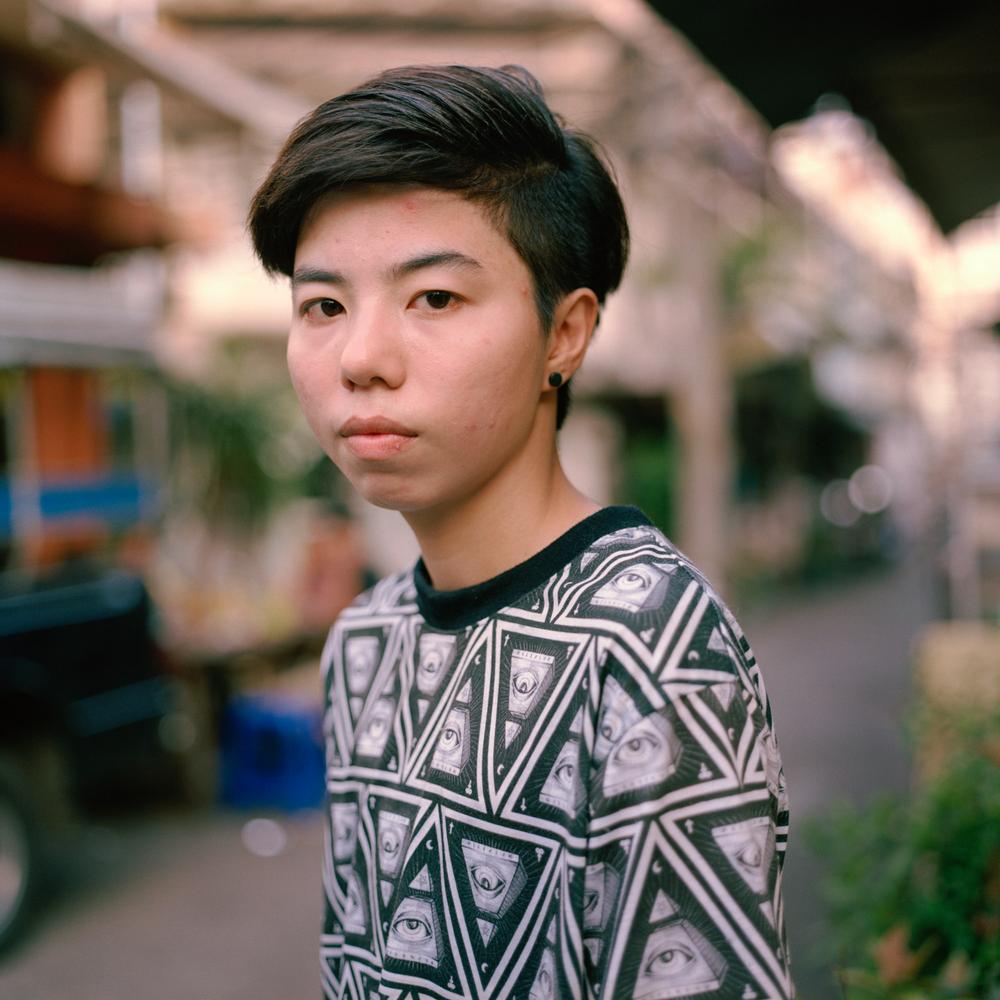Toms and The Concept of Gender in Thai Culture

TOMBOYS OF THAILAND (c) Muir Vidler, Special Permission Granted by Photographer

TOMBOYS OF THAILAND (c) Muir Vidler, Special Permission Granted by Photographer
“We talk to each other like boys talk. My brother taught me how to play football, go fishing and fight to defend myself. In the family I was very close to my brother and happy to behave like him."
Ink, an 18-year-old tom talking about growing up masculine with her brother, in Tangmunkongvorakul and colleagues’ 2010 study on the sexual experiences of sexually-diverse individuals in Chiang Mai, Thailand [1].
Within Thai culture, gender, gender identity, gender expression, biological sex, and sexual orientation are often not recognized as distinct concepts. Instead, they are merged into one concept called pheet (เพศ), which loosely translates to “sexual/gender category” in English [2,3]. This is different from Western cultures, where these terms can have different meanings from one another [4].
Although the concept of pheet combines gender, gender expression, biological sex, and sexual orientation, categories of pheet are different from one another based on gender, gender expression, biological sex, and sexual orientation. For example, masculine men who are primarily interested in women (chaay, ชาย) are part of a different category of phêet from masculine men who are primarily interested in men (gay king/fàay rúk, เกย์คิง) [2].

bangkok 2014 (c) seua_yai, Special Permission Granted by Photographer
One category of pheet that we will focus on here is tom (ทอม). Tom is also a category of pheet thii saam (เพศที่สาม), which roughly means “third sex/gender” in English [2,5]. Toms are often individuals assigned female at birth, who have masculine gender expressions and are most often sexually attracted to women. Although, in recent years, some transgender men (assigned female at birth) in Thailand have also started using the term tom to describe their gender identity [3].
While most toms typically have relationships with dees (ดี้), feminine women who like toms, toms can also have relationships with other toms [3]. Toms who are sexually attracted to other toms are called tom gays [2]. Toms’ gender roles, or the ways in which they are expected to act and behave, include both traditional masculine roles and roles that are unique to toms. For instance, while toms are often the financial provider in their relationships, they are also expected to be their partner’s caretaker [3].

TOMBOYS OF THAILAND (c) Muir Vidler, Special Permission Granted by Photographer

TOMBOYS OF THAILAND (c) Muir Vidler, Special Permission Granted by Photographer
While toms, like most pheet thii saam individuals, are acknowledged and recognized by Thai culture, they still experience discrimination and stigma in Thailand. For instance, for their 2022 study, Miedema and colleagues interviewed toms in Bangkok, Thailand, about their experiences with stigma. Almost all those interviewed had childhood experiences where they were forced to wear feminine clothing or behave more femininely. Tom participants in Miedema and colleagues’ study also talked about being shamed for their sexual orientation by both friends and parents. This can be seen when a tom from Miedema and colleagues’ interviews described her fallout with a best friend due to her sexual orientation:
“I like [name] and I'm in a relationship with her”. She went, “What?! [Name] is a girl!.. I can't accept it. I can't take it. Go far, far, away.” … I was so hurt. I felt like I wasn't a human being. I felt like I was something that shouldn't have been born. I was an abnormality in the world."
Despite the stigma they experience, all toms in Miedema and colleagues’ interviews expressed pride in their gender identity, as seen in this following quote from a tom in the study:
“It's my life and I challenge anyone to force/control me. I won't change unless I want to … I'm not ashamed of what I am, and nobody around me bothers me about it” [3].
[1] Tangmunkongvorakul, A., Banwell, C., Carmichael, G., Utomo, I. D., & Sleigh, A. (2010). Sexual identities and lifestyles among non-heterosexual urban Chiang Mai youth: implications for health. Culture, Health & Sexuality, 12(7), 827–841. https://doi.org/10.1080/13691058.2010.499150
[2] Ojanen, T. T. (2009). Sexual/gender minorities in Thailand: Identities, challenges, and voluntary-sector counseling. Sexuality Research & Social Policy, 6(2), 4–34. https://doi.org/10.1525/srsp.2009.6.2.4
[3] Miedema, S. S., Browne, I., & Yount, K. M. (2022). An intersectional burden: Gender and sexual stigma against toms in Thailand. Social Science & Medicine (1982), 292, 114591–114591. https://doi.org/10.1016/j.socscimed.2021.114591
[4] World Health Organization (WHO). (2021, May 24). Gender and health. World Health Organization. https://www.who.int/news-room/questions-and-answers/item/gender-and-health
[5] Thurston, L. T., Coome, L. A., Skorska, M. N., Peragine, D. E., Saokhieo, P., Kaewthip, O., Chariyalertsak, S., & VanderLaan, D. P. (2021). Mental rotation task performance in relation to sexual and gender diversity in Thailand. Psychoneuroendocrinology, 133, 105428. https://doi.org/10.1016/j.psyneuen.2021.105428
Toms: The Complex World of Female Love in Thailand | Coconuts TV by Coconuts TV
Visible Silence – PREVIEW by Ruth Gumnit (2015), published by Documentary Educational Resources on YouTube
Watch the video below to learn more!
Learn more about the concept of gender in Thailand, including more pheet thii saam categories, Thai children’s gender development, and the acceptance of gender diversity within Thai society through a conversation with Ashley Dhillon, a Ph.D. candidate at the University of Toronto Mississauga.
